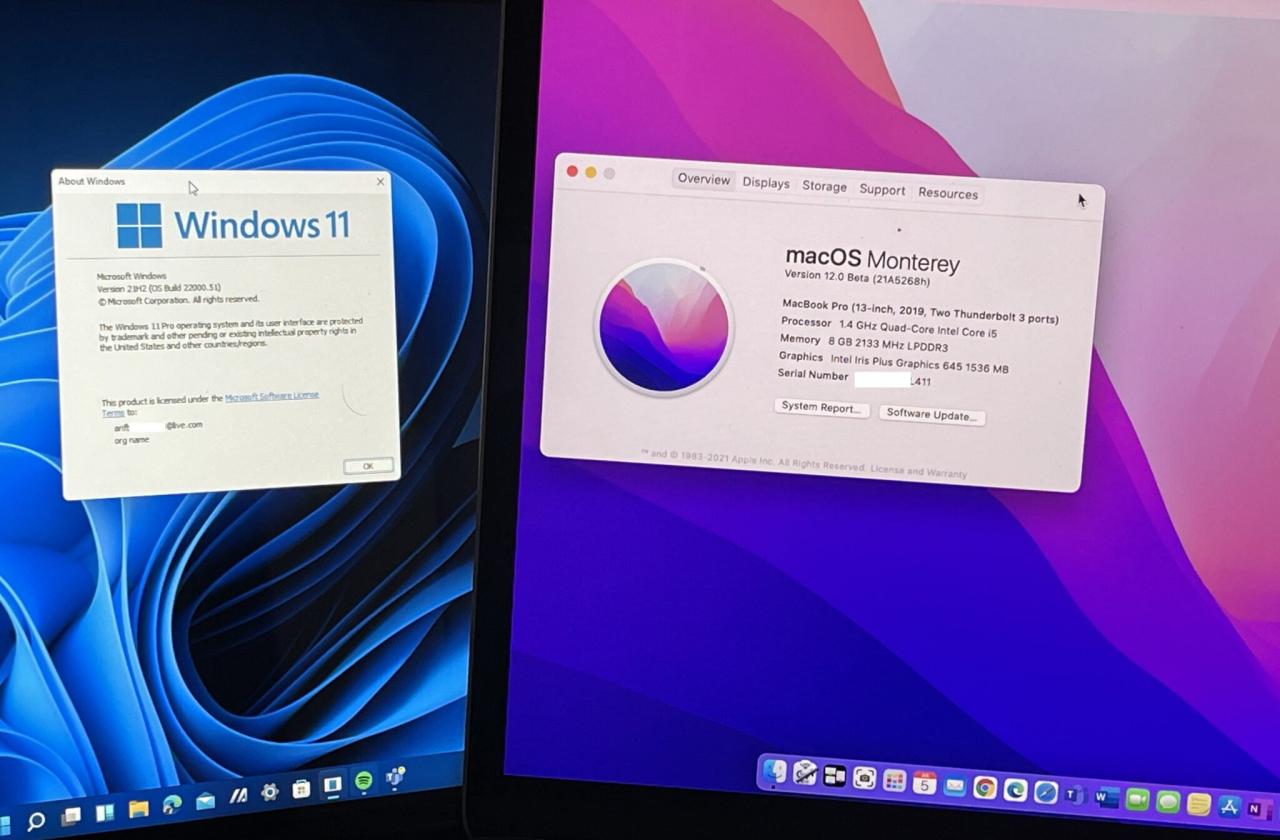2 examples of an operating system – In the realm of technology, operating systems reign supreme, serving as the foundation upon which all our digital adventures unfold. Join us as we delve into two prime examples of operating systems, exploring their key features and capabilities that make them indispensable tools in our modern world.
Overview of Operating Systems: 2 Examples Of An Operating System
An operating system (OS) is the software that manages the hardware and software resources of a computer. It provides a platform for application software to run and provides basic services such as memory management, process management, and input/output management.
There are many different types of operating systems, each designed for a specific purpose. Some of the most common types of operating systems include:
- Desktop operating systems, such as Windows, macOS, and Linux, are designed for use on personal computers.
- Server operating systems, such as Windows Server and Linux Server, are designed for use on servers.
- Mobile operating systems, such as Android and iOS, are designed for use on mobile devices.
- Embedded operating systems, such as VxWorks and QNX, are designed for use in embedded systems, such as medical devices and industrial control systems.
Examples of Operating Systems

Two widely used operating systems are Windows and Linux.
Windows, 2 examples of an operating system
Windows is a proprietary operating system developed by Microsoft. It is the most popular operating system in the world, with over 80% of the desktop market share. Windows is known for its user-friendly interface, wide range of software support, and strong security features.
Linux
Linux is a free and open-source operating system that is developed by a community of developers. It is known for its stability, security, and flexibility. Linux is used on a wide range of devices, from personal computers to servers to embedded systems.
Functions of an Operating System
The primary functions of an operating system include:
Memory Management
Memory management is the process of managing the computer’s memory resources. The operating system keeps track of which parts of memory are being used and which parts are free. When a program needs memory, the operating system allocates a block of memory to it.
When the program is finished using the memory, the operating system deallocates the memory so that it can be used by other programs.
Process Management
Process management is the process of managing the computer’s processes. A process is a running program. The operating system keeps track of which processes are running and which resources they are using. The operating system also schedules the processes so that they can run efficiently.
Input/Output Management
Input/output management is the process of managing the computer’s input and output devices. The operating system provides a way for programs to communicate with input devices, such as keyboards and mice, and output devices, such as printers and monitors.
Final Conclusion
Our exploration of two operating systems has illuminated the diverse landscape of digital platforms, each with its own strengths and applications. Whether navigating the vastness of the web or delving into the depths of complex software, these operating systems empower us to harness the full potential of our technological devices.
Key Questions Answered
What is the primary function of an operating system?
An operating system acts as the central hub, managing the hardware and software resources of a computer system, ensuring smooth operation and seamless communication between different components.
How do operating systems differ from one another?
Operating systems vary in their design, features, and user interfaces, catering to specific needs and preferences. Some excel in multitasking and performance, while others prioritize user-friendliness and accessibility.
What are some common examples of operating systems?
Widely used operating systems include Microsoft Windows, Apple macOS, and various Linux distributions, each offering unique advantages and catering to different user groups.